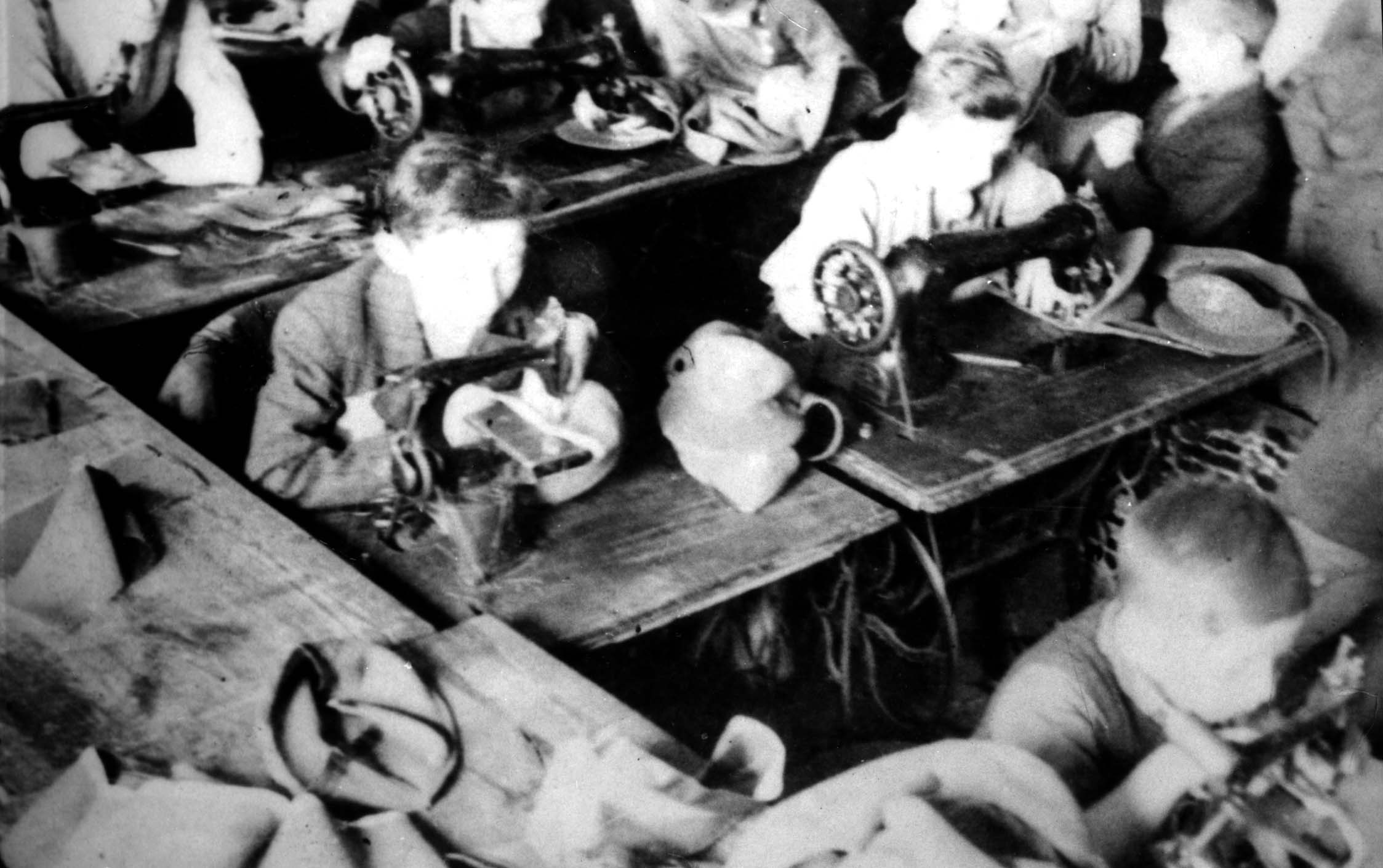The Apple Core of Łódź: A Story of Survival, Childhood, and Humanity Amid the Holocaust
In the heart of 1944, within the grim walls of the Łódź Ghetto in Poland, hunger was not simply an inconvenience. It was a merciless companion, shadowing every moment of daily existence. For the thousands imprisoned within its confines, food was more valuable than gold, and scraps of sustenance became symbols of life itself. Children, their bellies hollow and faces sunken, scavenged relentlessly — sifting through trash heaps for potato peels, onion skins, or even crumbs swept from a baker’s floor.
It was a place where starvation was engineered, where each day was a battle against both despair and death. Yet even in this bleak landscape, moments of profound humanity flickered, illuminating the resilience of the human spirit.
One cold afternoon, a boy — no more than eight or nine years old — discovered what seemed like a miracle: an apple core, half-browned and forgotten, cast aside by someone beyond the ghetto walls. For most children in such desperation, instinct would have urged them to devour it immediately, hiding from the eyes of others. But this boy did something unexpected.
Instead of hoarding this rare treasure, he gathered three of his closest friends. Together, sitting against the crumbling wall of a ghetto alleyway, he carefully tore the core into four uneven pieces. Their fingers trembled not only from the biting cold but also from the anticipation of this rare taste of sweetness.
The four children licked the scraps, nibbling the stringy flesh around the seeds. They chewed slowly, closing their eyes as though savoring a feast. And then, against the background of barbed wire and armed guards, something extraordinary happened: they laughed.
The sound of children’s laughter in the ghetto was almost a rebellion. It cut through the silence of despair, rising above the sorrow that clung to every corner of that place. For a fleeting instant, the harsh reality of hunger loosened its grip.
They began to imagine grand banquets: steaming bowls of soup, loaves of bread still warm from the oven, apples piled high in baskets. Their imaginations transformed the scraps into abundance, and their unity turned a moment of deprivation into one of childhood innocence.
This was more than hunger’s brief reprieve. It was a declaration. A message that even when the world tried to reduce them to shadows, they still carried within them the capacity for joy, for sharing, for kindness.
The apple core became more than food that day. It became a symbol of resistance, though not the kind carried out with weapons or defiance in the streets. Instead, it was a quiet resistance — the preservation of humanity.
-
It symbolized generosity, showing that even in extreme scarcity, a child could think beyond himself.
-
It embodied friendship, binding four souls together in an act of trust and loyalty.
-
It reflected the resilience of the human spirit, proving that cruelty could not extinguish kindness.
In the long, brutal history of the Holocaust, acts like these may seem small, almost imperceptible. Yet they echo through time, offering us lessons about the power of unity, compassion, and survival.
Psychologists and historians often emphasize that one of the Holocaust’s cruellest crimes was the theft of childhood. Instead of toys, children clutched scraps of food. Instead of schoolbooks, they memorized survival strategies. Instead of playgrounds, they knew only ghetto courtyards and guarded fences.
But in that fleeting moment with an apple core, four children reclaimed a fragment of what had been stolen. They were not prisoners, not victims — they were simply children, giggling and sharing. Their laughter was their rebellion, their way of telling the world: We are still here. We are still human.
Today, when we encounter this story, it resonates far beyond the walls of Łódź. In a world still marked by conflict, inequality, and division, the lesson of the apple core reminds us:
-
Acts of kindness matter — even the smallest can transform despair into hope.
-
Shared humanity endures, even in the darkest times.
-
Survival stories from history are not just relics; they are guides for how we might live with compassion and courage today.
This story also underscores the importance of Holocaust history education. By remembering these moments, we do more than honor the dead. We preserve the voices of the children who laughed, who shared, who imagined — and in doing so, we affirm our responsibility to fight against hatred and dehumanization wherever they arise.
By weaving these concepts into the storytelling, the piece becomes both moving literature and a resource for those seeking to understand Holocaust history and its enduring relevance.
The story of the apple core is not just about four children in a ghetto. It is about all of us. It asks us what we would do in a world stripped of comfort, how we would respond when faced with despair.
Would we hoard the apple for ourselves, or would we share it? Would we let cruelty define us, or would we insist — even quietly — on love, kindness, and connection?
In 1944, four children answered with their laughter. They turned hunger into a moment of abundance, despair into fleeting joy, and cruelty into a chance to prove that humanity endures.
The apple core may have been small, but its meaning was vast. It was proof that even in the darkest corners of history, light can survive — fragile, fleeting, but powerful enough to outlast the silence of oppression.
And today, as we remember them, we carry that light forward.
Note: Some content was generated using AI tools (ChatGPT) and edited by the author for creativity and suitability for historical illustration purposes.




Leave a Reply